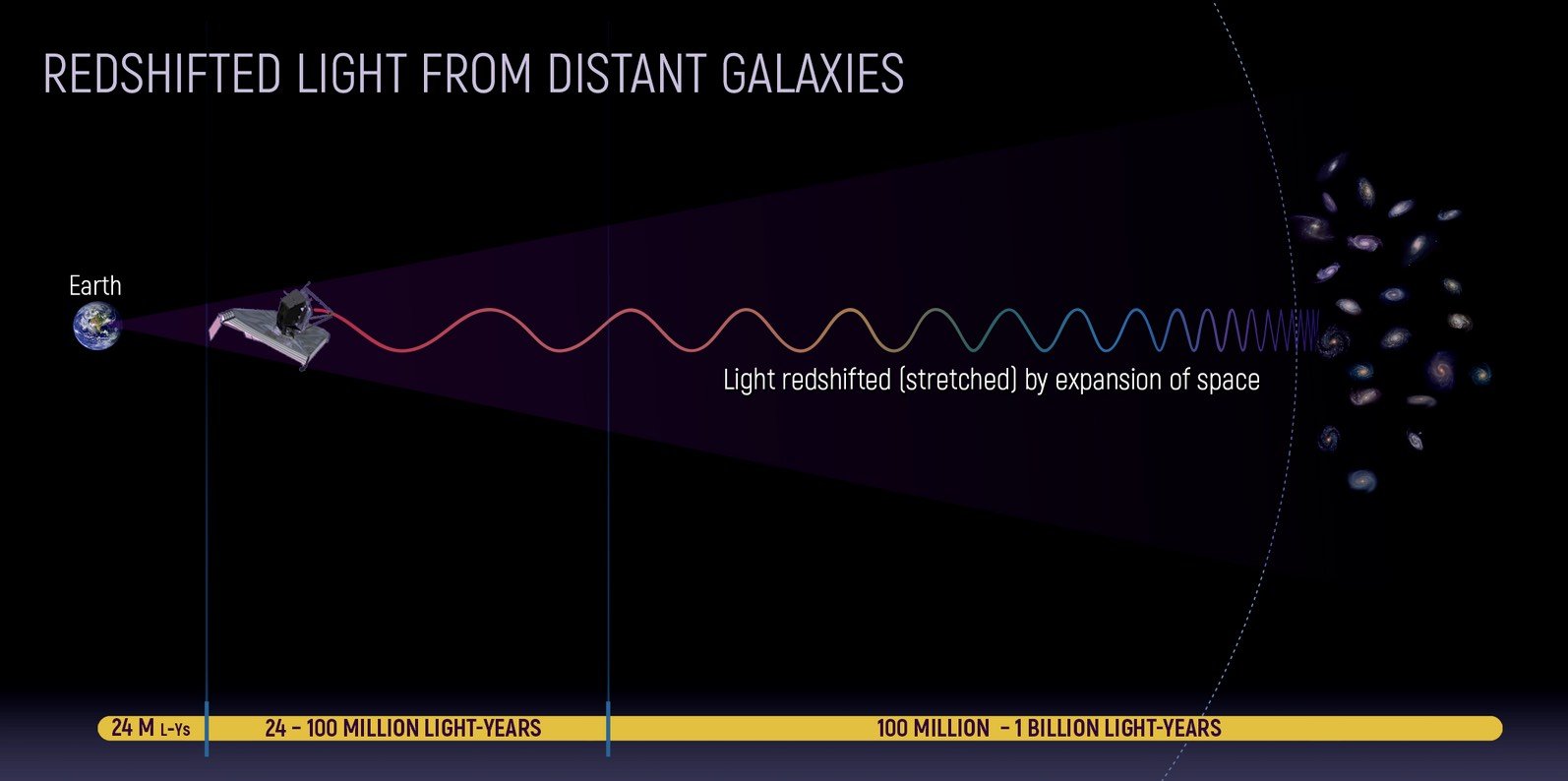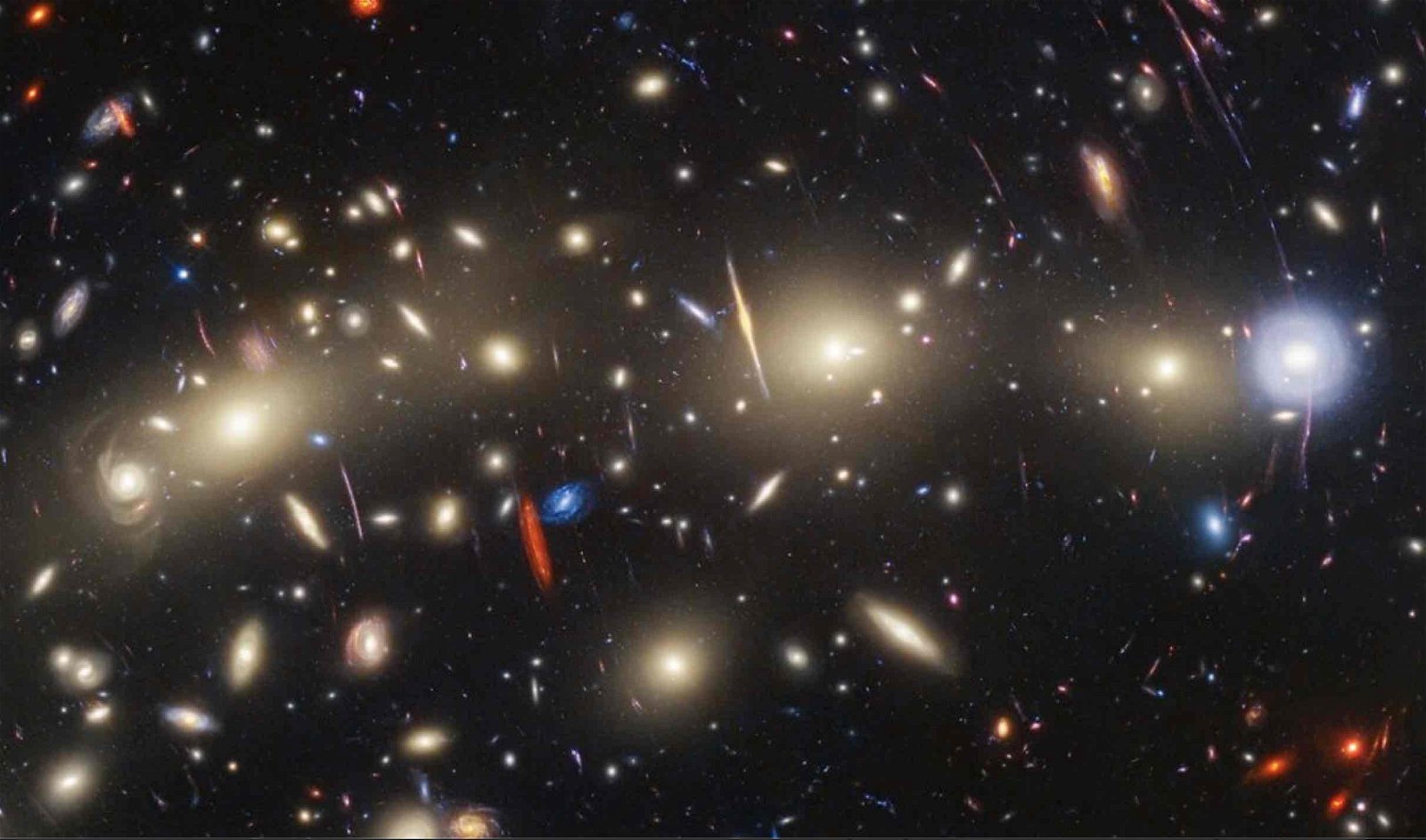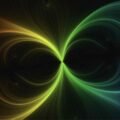For decades, astronomers have observed gravitational effects in our universe that cannot be easily explained by general relativity. Attempts at resolving this cosmic conundrum led to the hypothesis that a mysterious form of matter may proliferate throughout the universe that does not interact with light or electromagnetic fields, giving rise to its popular name: dark matter.
Since this enigmatic, nonluminous material cannot be seen or detected, the existence of dark matter is implied only through indirect observation of the way gravity behaves throughout the cosmos, allowing us to resolve the behavior of stars, planets, and galaxies.
Because of this, many researchers have questioned whether it exists at all, hinting at the possibility that there could be a few significant puzzle pieces missing in the picture we have assembled of our universe.
Now, in the latest challenge to its reign as the likeliest solution to such enduring cosmic mysteries, a new paper argues that there may not be enough room in the universe for dark matter, after all.
This, according to Rajendra Gupta, a physics professor at the Faculty of Science at the University of Ottawa, could offer a novel explanation for the elusive gravitational phenomena in our universe that Einstein’s famous theory of gravity seemingly cannot resolve.
Gupta bases his conclusions on a combination of what physicists call covarying coupling constants (CCC) and “tired light” (TL) theories which, united, become what is known as the CCC+TL model).
Specifically, covarying coupling constants involve a concept in theoretical physics that allows certain fundamental constants that are generally considered to be fixed to vary in a correlated manner. The concept is an outgrowth of proposals that question whether physical constants like the speed of light or gravitational constancy over time are indeed as constant as conventional theories maintain.
Tired light, by contrast, describes a potential alternative explanation for currently recognized ideas involving redshift distance relationships. The new findings are an outgrowth of previous research Gupta based on distant observations made by the James Webb Space Telescope, which provided new insights into the structure and masses of galaxies at very high redshifts believed to be some of the earliest to have formed in the universe.


The discoveries took astrophysicists off guard since viewing the galaxies at this distance allows us a peek at how they would have appeared long ago. The fact that they appear to be as evolved at this stage in their cosmic development as much older galaxies was problematic, to say the least.
“While tired light (TL) models have been shown to comply with the JWST angular galaxy size data, they cannot satisfactorily explain isotropy of the cosmic microwave background (CMB) observations or fit the supernovae distance modulus versus redshift data well,” Gupta wrote in his earlier research based on these curious findings. This prompted him to develop what he characterizes as “hybrid models that include the tired light concept in the expanding universe,” and led to a remarkable proposition: that the universe could be much older than previous estimates had entertained.
Combining the covarying coupling constants (CCC) and “tired light” (TL) theories, Gupta says his latest research only builds on the mounting challenges to our current models for how the universe works.
“The study’s findings confirm that our previous work about the age of the universe being 26.7 billion years has allowed us to discover that the universe does not require dark matter to exist,” Gupta said in a statement.
“In standard cosmology, the accelerated expansion of the universe is said to be caused by dark energy,” he says, “but is in fact due to the weakening forces of nature as it expands, not due to dark energy.”
Conventional theories hold that close to 27% of our universe is composed of dark matter and just 5% of ordinary matter. The rest of the universe is comprised of dark energy which, like dark matter, is only hypothesized to exist as an enigmatic repulsive force that can counter the effects of gravity.
In his new research, Gupta examined recent data on the distribution of galaxies at lower redshifts, which he compared to existing literature related to the angular size of the sound horizon at high redshifts.
The results, he says, are far from being the first to raise questions about dark matter. However, his observations are the first he is aware of that challenge its existence based on whether it is needed to account for gravitational phenomena observed in our universe. Ultimately, Gupta’s findings could potentially lead to entirely new cosmological models.
“There are several papers that question the existence of dark matter, but mine is the first one, to my knowledge, that eliminates its cosmological existence while being consistent with key cosmological observations that we have had time to confirm,” Gupta said.
Gupta’s new paper, “Testing CCC+TL Cosmology with Observed Baryon Acoustic Oscillation Features, was published in The Astrophysical Journal on March 15, 2024.
Micah Hanks is the Editor-in-Chief and Co-Founder of The Debrief. He can be reached by email at micah@thedebrief.org. Follow his work at micahhanks.com and on X: @MicahHanks.

